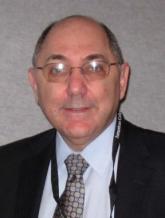Conference Coverage

Chelation Trial: Results Positive but Not Practice Changing
Major Finding: Post-MI patients who received chelation therapy had 39 fewer cardiovascular events than did those receiving placebo, a...

FROM A PREVIEW OF ACC 13
Several studies to be presented at the annual meeting of the American College of Cardiology March 9-11 could change clinical practices. And then there are the mummies.
That’s right, mummies. More than 100 of them. They won’t be lumbering along the hallways of San Francisco’s Moscone Center, but they could tell us whether human ancestors in different parts of the world had atherosclerosis when they died and got mummified.
Following CT scans that showed atherosclerosis was common in a previous study of 52 Egyptian mummies (JACC Cardiovasc. Imaging 2011;4:315-27), investigators have imaged more than 100 mummies of people who lived 3,800 years ago in different cultures around the world. The findings should advance understanding of atherosclerosis in human civilization, ACC.13 Chairman Dr. Miguel A. Quiñones said in a teleconference preview for the press.
Some practice-changing news could come from some of the 22 late-breaking clinical trials and 2,130 abstracts accepted for presentation at the meeting, starting with highly anticipated results from a study of an intervention for atrial fibrillation, said Dr. Quiñones, chair of the department of cardiology in the Methodist Hospital System, Houston, and professor of medicine at Weill Cornell Medical College, New York.
He and a roster of other ACC officials provided these highlights:
• PREVAIL trial: Some of the most anticipated results will come from a trial of elderly patients with atrial fibrillation who were randomized to treatment with a device that allows an electrophysiologist to seal the left atrial appendage (LAA) or to conventional treatment with warfarin to reduce the risk of clots and stroke. For the nearly 1 in 10 U.S. residents aged in their 80s and 90s with atrial fibrillation, a frail physical status puts them at risk of falling, which can cause problematic bleeding if they’re being treated with anticoagulants.
Dr. Quiñones said that he expects the results of the PREVAIL (Evaluation of the WATCHMAN LAA Closure Device in Patients with Atrial Fibrillation Versus Long-term Warfarin Therapy) trial to be "extremely powerful in knowing whether this type of therapy is warranted in a selected group of patients with atrial fibrillation."
• RELAX trial: Treatment for heart failure in patients with a normal ejection fraction hasn’t advanced significantly in 10-15 years, but the RELAX (Phosphodiesterase-5 Inhibition to Improve Clinical Status and Exercise Capacity in Diastolic Heart Failure) trial could change that, he said. Roughly half of patients with heart failure have a normal ejection fraction, which is increasingly common. The trial studied whether the phosphodiesterase inhibitor sildenafil (Viagra) can improve the relaxation functions of the heart and improve clinical outcomes in these patients who have preserved pumping action but fibroses and stiffness in the heart that produce the symptoms of heart failure.
"Will this new class of agents be a breakthrough in the treatment of a disease that is very important for public health, the cost of health care, and management of diseases?" he asked.
• TACT trial: Preliminary results of TACT (Randomized Comparison of High-dose Oral Vitamins vs. Placebo in the Trial to Assess Chelation Therapy), reported at the annual meeting of the American Heart Association last fall, suggested that chelation therapy for atherosclerosis might be beneficial. Investigators will report results of treatment with chelation, high-dose oral vitamins, or placebo, alone or in combination with each other. The results "could be a game changer," Dr. Quiñones said.
• HPS2-THRIVE trial: This study of whether adding niacin and laropiprant to statins is better than statins alone in preventing future myocardial infarction in patients with previous MI or heart disease failed to reach its primary endpoint, Merck announced in late 2012. But the data on more than 25,000 patients provides enough power for potentially useful subgroup analyses, ACC.13 cochair Dr. Christie M. Ballantyne said. The cohort as a whole had low LDL levels at the start of HPS2-THRIVE (Heart Protection Study 2–Treatment of HDL to Reduce the Incidence of Vascular Events, but U.S. adults tend to have high LDL levels. Subgroup analyses may or may not show a beneficial effect of niacin/laropiprant in some populations, though it will be impossible to say whether any effect is due to the niacin or to laropiprant, which is given to reduce the side effect of flushing caused by niacin, said Dr. Ballantyne, director of the Center for Cardiovascular Disease Prevention at Methodist DeBakey Heart Center, Houston.
• PEITHO trial: Results of the PEITHO (Pulmonary Embolism Thrombolysis) study are of particular interest after tennis star Venus Williams had to drop off the competitive circuit due to pulmonary embolus. The study randomized about 1,000 patients with acute pulmonary embolism in 13 countries to anticoagulation treatment with heparin alone or to heparin plus the clot-busting agent tenecteplase. "The results will help guide therapy and probably will influence the next set of chest guidelines," said ACC.13 cochair Dr. Mark G. Davies, a senior member at the Methodist Hospital Research Institute, Houston.

Major Finding: Post-MI patients who received chelation therapy had 39 fewer cardiovascular events than did those receiving placebo, a...

